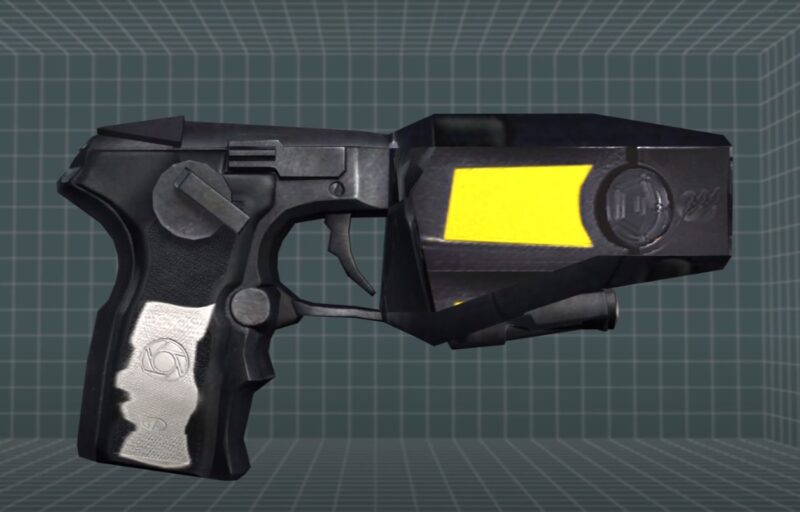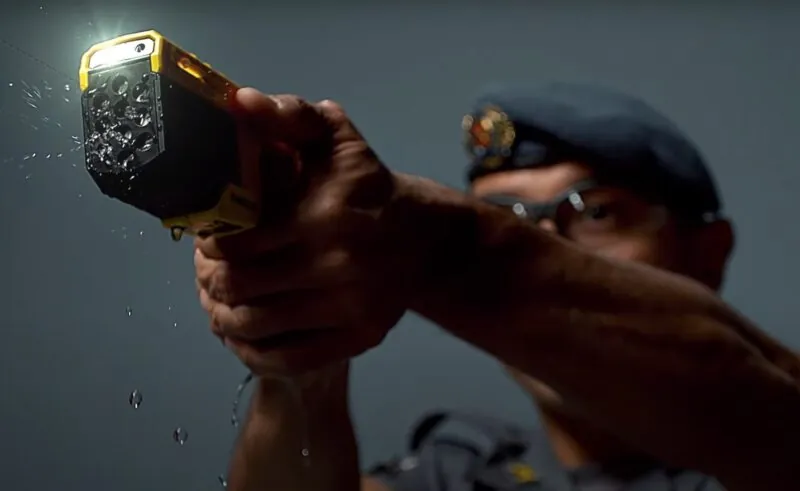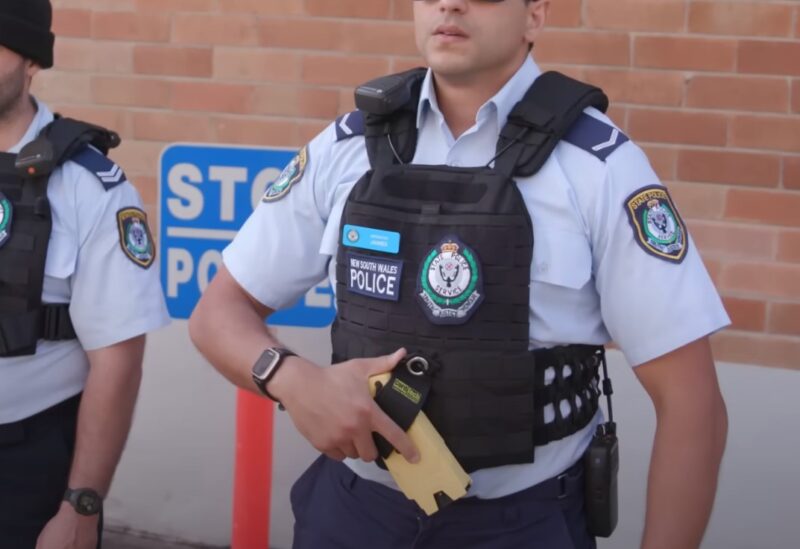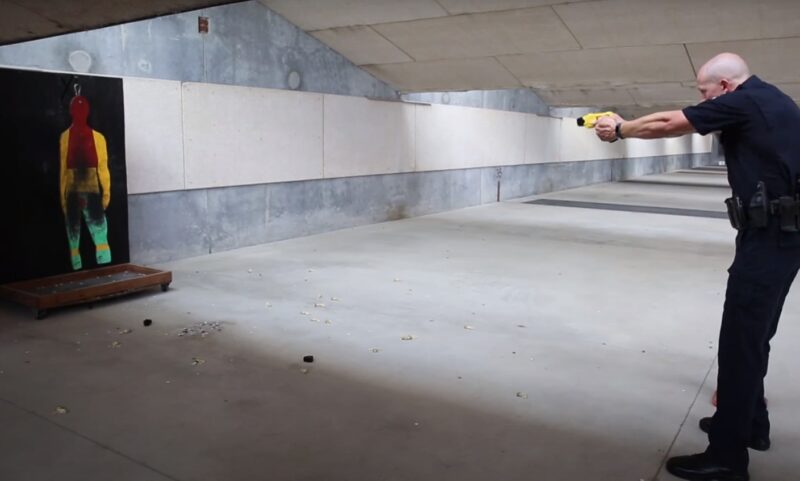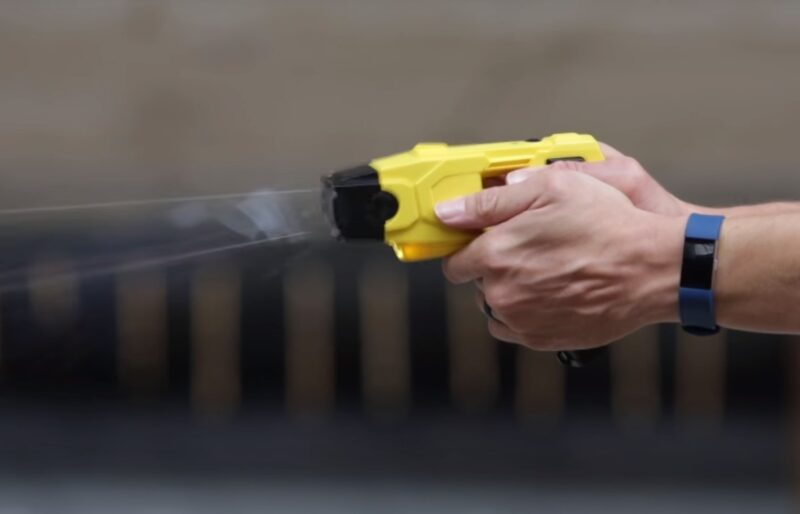Police tasers pack a serious punch – I mean, they can deliver up to 50,000 volts of electricity! That’s just wild. Police Taser Use is designed to stop someone in their tracks by hitting them with a controlled electric shock. Tasers have become such a standard part of law enforcement equipment these days, you see them being used all over the globe.
But the story with these tools is not so simple. There’s a lot of ongoing debate about how effective and safe they really are. I think it’s important to learn details – how these things work under the hood, the physical impacts they can have on people, and all the complex ethical considerations around their use.
What Exactly Is a Taser?
A Taser is more than just a high-voltage tool; it is a sophisticated device designed to incapacitate a person temporarily without inflicting permanent harm.
- Voltage Output: Initially, tasers can emit between 30,000 to 50,000 volts to overcome the resistance of the air and any clothing on the target. This high voltage is crucial for creating an electrical arc capable of reaching the target effectively.
- Voltage on Impact: Upon making contact, the voltage delivered into the body drops to about 1,200 volts. This lower voltage is still sufficient to disrupt the neuromuscular system, causing temporary paralysis.
- Amperage: The taser’s real safety feature lies in its amperage, which is less than 2 milliamps. This low amperage ensures the shock is painful and disorienting but not lethal, making tasers a “less than lethal” option.
The Impact of 50,000 Volts
When someone mentions 50,000 volts, it sounds incredibly powerful—and it is. However, it’s crucial to note that while the voltage is high, the current is low, which is why tasers are classified as less lethal. The high voltage ensures that the electrical current can penetrate clothing and reach the body, causing temporary paralysis and pain without intending to cause permanent harm.
Can Tasers Be Deadly?
The optimal distance between the two probes that tasers shoot out is at least 12 inches on the target. This spread is crucial because it allows the electric current to affect a larger area of the nervous system, maximizing the incapacitation effect.
Despite their intended safety, tasers have been linked to over 500 deaths in the United States since 2001. The risk of death primarily arises when shocks are delivered to the chest, potentially leading to cardiac arrest. This stark statistic highlights the need for stringent controls on when and how tasers are used.
Are Tasers Effective in Subduing Suspects?
Law enforcement agencies have mixed reviews on the effectiveness of Tasers. While they have been successful in many situations, there are instances where tasers have failed to subdue individuals.
Factors such as the person’s physical condition, whether they’re under the influence of drugs like PCP, or even their clothing can affect a taser’s effectiveness.
Why Might a Taser Not Work?
Despite the high initial voltage, tasers are designed to be energy-efficient. The actual energy delivered to the body during a taser shock is comparable to the energy in a small Christmas tree light bulb.
Several factors can influence the effectiveness of a taser. For example, thick clothing can prevent the prongs from making direct contact with the skin. Additionally, individuals with high tolerance levels due to substance use or certain physical conditions may not react as expected to the electric shock.
The Role of Tasers in Police Culture
The design and technology of tasers have evolved significantly since their introduction. Early models were bulkier and required closer range, while modern tasers can be effective from a distance of up to 35 feet, allowing law enforcement officers to maintain a safer distance from potential threats.
Tasers were introduced as tools to help law enforcement manage difficult situations without resorting to lethal force. However, the reliance on tasers has raised concerns about the prioritization of force over de-escalation techniques.
Training in de-escalation can often take a backseat, which can exacerbate situations, particularly when dealing with individuals experiencing mental health crises or under the influence.
How Often Are Tasers Used?
Tracking the use of tasers by police departments is challenging due to a lack of universal data. This gap in information makes it difficult to assess the true scale of taser use and its outcomes across different communities and scenarios.
The Debate on Safety and Ethics
The safety of tasers is a contentious issue. While they offer a non-lethal alternative, the potential for death and serious injury cannot be ignored. The debate extends to ethical considerations, such as the potential for misuse against vulnerable populations, including those with mental illnesses or under the influence of substances.
Are There Alternatives to Tasers?
Beyond law enforcement, tasers are being developed for personal defense, with models designed to be less intimidating and easier to use for civilians, emphasizing safety and accessibility.
Exploring alternatives to tasers involves a broader discussion on law enforcement tactics and the need for comprehensive training in de-escalation techniques. Improving communication skills, conflict resolution, and understanding mental health issues are crucial steps toward minimizing the need for force.
Why Proper Training Matters
One of the key factors in mitigating the risks associated with taser use is proper training and strict operational guidelines. Officers must be trained not only in the mechanical use of Tasers but also in understanding the physiological and psychological effects of electric shock on the human body.
Furthermore, clear guidelines must dictate when it is appropriate to deploy a Taser, emphasizing the importance of using these devices as a last resort.
What Happens When Training Is Lacking?
Lack of adequate training can lead to overreliance on tasers, inappropriate use, and increased risk of fatal outcomes. It’s essential for law enforcement agencies to invest in comprehensive training programs that cover a range of scenarios, including how to recognize signs of mental illness and how to engage effectively with individuals experiencing a crisis.
Collaboration and Continuous Improvement
Partnerships with medical and technology experts can enhance the safety and effectiveness of Tasers. Ongoing research and development are crucial in addressing the limitations and risks associated with Taser use.
Ethical Use
Ethical considerations are paramount in the deployment of Tasers. Law enforcement agencies must engage in transparent practices and dialogue with the communities they serve.
This engagement helps build trust and ensures the responsible use of Tasers.
Final Words
Tasers are not simple weapons. They represent a critical tool for law enforcement, providing a non-lethal alternative to firearms. However, their use is not without risks and controversies.
With proper training, protocols and oversight, police can use Tasers effectively and responsibly, prioritizing human life and complying with human rights principles. As society develops, public security methods must also advance.

